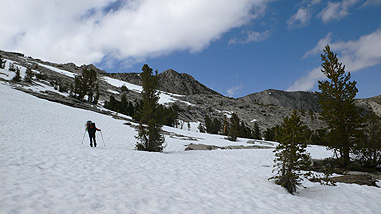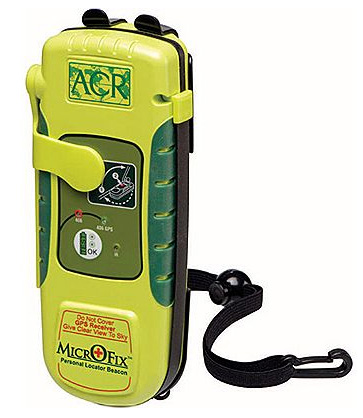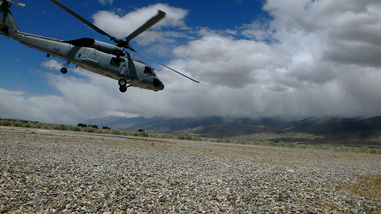This post details a mountaineering incident last week in which a personal locator beacon (PLB) was employed. One of the involved climbers, Bill Becher, a writer from southern California, had the ACR MicroFix PLB unit in his pack, though he never expected to use it. But while descending from Mt. Gilbert near Bishop, Calif., in the Sierra Nevada mountains, Becher’s friend and climbing partner fell and broke his leg. They were several miles from civilization with no good options. Here’s a quick Q&A with Becher on what they did next.
The Gear Junkie: Describe what led up to your incident.
Becher: We had hiked up out of South Lake on Wednesday and bivyed at 10,800 feet east of Treasure Lakes. We were carrying ice tools, crampons an alpine rack and ice screws and were planning on climbing the ice couloir at Mt. Gilbert. We crossed snow and granite slabs called “The Death Slabs” to get to our bivy spot at the approach to the climb. But Thurs. a.m. we woke up and it was snowing pretty hard so we decided to bail on the climb. At about 9 a.m., heading back down, my partner was hiking to a spot to set up a rappel when he slipped on a snow covered rock that was pitched at an odd angle. He broke his leg.

On the approach to Mount Gilbert. Photo credit: Bill Becher
The Gear Junkie: What were your first thoughts?
Becher: I had a PLB, the ACR MicroFix, and we decided that since there was no way for him to hike out we needed to switch it on and send the distress signal. I carved out a platform in the snow and set up the tent while my partner splinted his leg with trekking pole sections and duct tape. We got in our sleeping bags to wait. We decided if nobody showed up by the next day and the weather cleared I’d hike out and go for help. I’d left a detailed description of where we were going with my wife.

ACR MicroFix PLB unit.
The Gear Junkie: Did the PLB work immediately?
Becher: It was about noon when we heard a helicopter—three hours after I turned on the distress signal. I put on my red jacket and went out and waved. The chopper circled looking for us. It was difficult to spot us and because we were on a snowy, rocky slope there was no place for the helicopter to land. But it did make a good snow blower! They finally lowered a medic. His name was Zack. He checked my partner out—the leg appeared to be broken but no bones sticking out or bleeding. The helicopter lowered a basket and hoisted him up. I put on my harness and the medic and I clipped into the line and we were hoisted up.
We were able to take some gear, but had to leave my pack and the tent. They took us to the Bishop hospital where they did X-rays. He had a spiral fracture of the right fibula. They put a cast on it. The SAR [search-and-rescue] deputy drove me back to the trailhead but my key were in the pack on the mountain. Fortunately, he was able to jimmy the door open.
The Gear Junkie: Can you explain how this PLB process worked?
Becher: The way the PLB system works is it sends a signal to satellites that circle overhead every 45 minutes. The PLB is registered at NOAA with my name, emergency contact number, address, etc. When NOAA received the signal, an Air Force SAR coordinator called my wife, who told them where we were and that it was unlikely that I’d accidentally triggered the device. The second satellite pass—45 minutes later—confirmed that the PLB was still on and they rolled the helicopter out then from China Lake Naval Air Station. The Inyo County Search and Rescue team coordinated and was in contact with my wife. I felt bad that she had to get that call but she was able to give them detailed info our climbing route.









